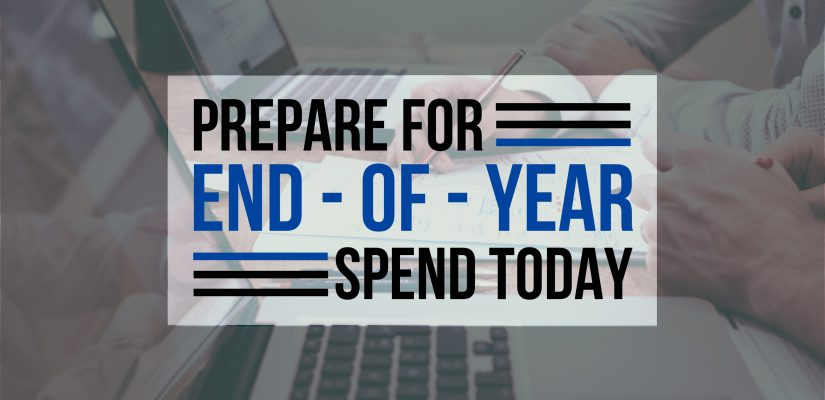
Prepare for FY Q4 Today
Jan Feb Mar | Apr May Jun | Jul Aug Sep | Oct Nov Dec
New Year for Government contractors starts in October of every year, and yet most small businesses get started with their business strategy in December and January. Like every New Year Resolution, the results will never fail to disappoint. It’s not entirely too late, but here are five tips why your company should be working FY Q4 (yes! the left-over money in government budgets) now.
1. Think ahead – plan to earn the sole source dollars at the start of the fiscal year.
The fourth quarter of the government fiscal year is July, August, September of every year – it comes like clockwork, and yet companies seemed to come to us in September wanting to know how they can get some of those sole-source dollars! Particularly if you belong to any of the categories that allow the government to justify a sole source award to your company, you should start working on the relationship in the first quarter. Remember, the left-over budget is rarely accidental. The government knows what it wants to buy and most of the time from whom, especially when it comes to spending year-end funds. When it comes to sole-source dollars, relationships are quintessential, and remember, relationships take time.
2. Start talking to your customer about Q4 in Q1.
Help your customer plan for Q4 as much you. The best place to get directed awards is with your own clients. On a project, make a list of improvements you can make that are outside the current scope. Be clear to demonstrate value – why do you think the three to five things you are suggesting will improve the outcome of the current project? Why can you not do it within the existing scope and budget? Articulate your unsolicited proposal and schedule a time with your client to present the value-added recommendations with a clear budget. One meeting is not enough, have a roadmap in mind on how you will keep this topic fresh in your customer’s mind. When the fourth quarter comes around, and your client finds some the extra money burning a hole in their wallets, now they have a legitimate and justifiable reason to give the extra money to your company.
3. Sources Sought Responses are not a waste of time – respond with tact!
We often see companies skipping the Sources Sought stage and responding to the RFP. We have all heard the age-old adage that someone has influenced the RFP with their sources sought responses. The truth of the matter is, most companies respond to sources sought notices with a very vanilla response. They don’t take the time to give the agency and the client what it wanted – advice, ideas, and suggestions. Sources Sought Notices do not have evaluation criteria; they won’t be disqualified because you didn’t follow the instructions! If you can demonstrate to the client that you took the time to read what they put together and critic (positively and negatively) on their work, with tact, you will be remembered. You may not be able to inject an influencing feature into the final RFP, but you took time to appreciate and contribute to the client’s efforts – that will be remembered just as much as someone who replies with their capability statement and tries to sell the agency on what they can offer versus what the agency needs. ProposalHelper highly recommends responding to the Sources Sought notices – the first step to building a relationship. But once you respond, don’t stop there.
4. Remember the ‘Rule of Eight’
It is common knowledge, backed by research, that it takes eight meetings before someone can remember you. It is essential to come up with what ProposalHelper calls ‘true-targets’ – recompete programs that you want to capture away from the incumbent and strategically work on them. Building a list of your true-targets requires business intelligence, understanding of the agency behavior, in-depth research on the end-users needs, competitive knowledge, and buying patterns. Working with a team like ProposalHelper’s Business Intelligence Group will allow you to focus on building relationships while our team invests in augmenting your team to gain the knowledge and information you need to get noticed. Once you have your true-targets, determine your eight ways to reach the same audience, invited or uninvited.
5. Follow through on your efforts.
Sole source contracts are not rare, but they are getting harder to capture. Decision-makers within agencies are cautious of the perceived improprieties and are incredibly diligent and careful when considering their sole source awards. Once you are awarded a contract through, you not only have to be ready to perform, but you need to follow through on your capture to now ensure the contract is not relying on ‘left-over money’ each contract year. You also have to continue doing everything suggested here after you get your contract. And if you don’t bag that sole source in Q4, remember, you invested time, effort, and money to build the relationship. If you feel positive about continuing the relationship, then your outcome may change to a different contract than you were targeting. Still, your efforts will be rewarded most of the time.
Contributor: Reena Bhatia | March 2020
Reena Bhatia is the CEO of ProposalHelper. For more information on how ProposalHelper can assist you with your business intelligence and implement the strategy we help you build, please contact customersupport@proposalhelper.com or via phone at 571-535-4707.